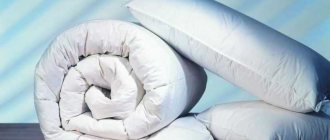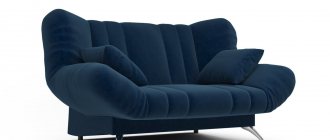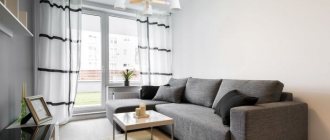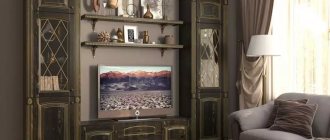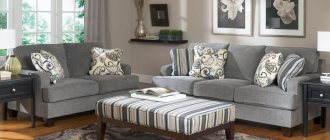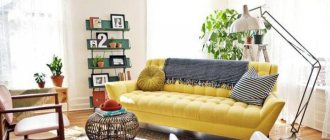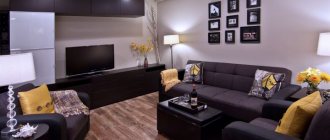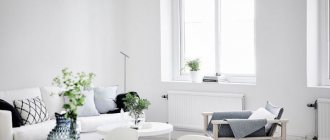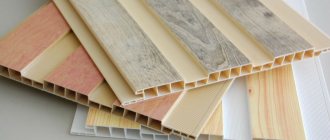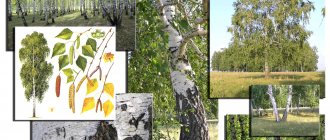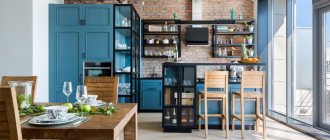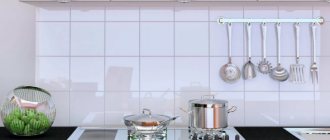Today you can find HDF, MDF and PVC laminate on sale, since the development of production has led to the emergence of several types of laminate, each of which has its own characteristics. It is worth knowing which one to choose and how they differ from each other.
In general, laminate is a hard finishing floor covering that is highly wear-resistant and easy to maintain. But if you delve into the details, HDF, MDF and PVC laminate differ significantly, so each of these types requires a more detailed consideration.
MDF or laminate - which cladding is better?
The facade of cabinet furniture is its main decorative element.
The choice of façade material determines not only the beauty of the kitchen unit or wall, but its practicality and durability. For the production of cabinet furniture upholstery, MDF and laminate are the most common and popular. Making a choice between them is not easy. You need to be aware of their pros and cons, as well as the aspects of choice for different rooms. MDF is a material based on thin wood fibers . They are compressed into sheets under high pressure. Carbide resins are used as a binding composition for the production of wood fiber sheets. Thanks to their dense structure, it is easy to give their surface both a flat and shaped shape. The abbreviation itself stands for “finely dispersed fraction” .
There are several options for using such panels:
- Interior cladding.
- Manufacturing of cabinet furniture facades.
- Application for sound insulation.
- Use as a decorative trim on iron doors.
The popularity of MDF is growing. Among the advantages of fibreboards: decorative appearance, water resistance, heat resistance, strength, environmental friendliness.
What difficulties may arise during installation?
Laminate cladding and cladding are simple. But sometimes some difficulties still arise. Especially if the work is performed by a novice master.
The most common troubles are:
The panels create a load on the walls.
If the material is fixed to drywall, which is set on plaster, there is a risk that the wall will collapse under the weight of the material. Fragile walls should be strengthened before facing. But it is best to carry out interior finishing on concrete surfaces.
- Deformation of the facing layer. Although laminate has a low level of hygroscopicity, it contains cellulose, which tends to swell when exposed to moisture.
- The panels do not stick well to the wall. The laminate is fixed using self-tapping screws or nails. Some products are equipped with a click lock. Thanks to this element, the panels are held more rigidly on the surface. But the head of a nail or screw prevents the click lock from closing tightly. The result is an ugly and wide groove. Therefore, for high-quality cladding, it is better to buy models without locks.
Laminate
Laminate is called particle board or chipboard , on the surface of which there is a special water-resistant coating. They are made in the form of sheets or panels, which are pressed from wood chips under high pressure. Formaldehyde resins are used as a binding component in this production process.
Finished chipboards do not differ in decorativeness. To use them in furniture production, different coatings are applied to their surface. Chipboard lamination is now more popular. The purchased laminated chipboard or laminate is distinguished by its beautiful appearance and practicality.
Laminated chipboard is used mainly in the furniture industry . Furniture cases and facades are made from it. Laminated chipboard is also used to produce the base of upholstered furniture.
What do MDF and laminate have in common?
General features of the production and implementation of MDF and chipboard:
- Natural crushed wood is used for production.
- Manufacturing is carried out by pressing under pressure using special binders.
- The finished product has the form of panels or slabs covered with a special water-repellent film, which are subsequently cut into fragments of the required size.
- This is the main product used in furniture production.
- Furniture facades made from these materials differ in water resistance, heat resistance, decorativeness, practicality, and durability.
Main differences
Despite some common differences in production and implementation, MDF and laminated chipboard have a huge number of differences. You need to look at them to choose the right furniture material.
Fraction size
The size of the fraction of these products differs fundamentally . For the production of fiberboards, a small fibrous wood fraction is used. For chipboard, a much larger fraction is used - crumbs. The density of the finished product depends on the size of the fraction. MDF is much denser than laminated chipboard and has low porosity.
Individuality of the binder
Carbide resins are used in the manufacture of wood fiber products . They do not contain substances that are toxic or harmful to human health. Formaldehyde resins are used to produce laminates. These substances release formaldehyde , which is recognized as a carcinogen. Chipboards are divided into classes depending on the resins used. The higher the class, the less harmful substances the finished product emits.
Slab surface
The surface structure of the finished panel depends on the size of the initial substance fraction. Large-fraction laminated sheets have a smooth surface. The surface of finely dispersed sheets, the fraction of which is very small, may be smooth, and also have a complex shaped shape.
Strength
Wood fiber sheets or chips are quite strong . But their strength varies because it depends on density. Wood fiber furniture is the strongest and holds various fasteners well. The lowest density of laminated chipboard leads to the fact that handles or door hinges attached to it may fall out over time. It is quite difficult to secure them firmly again. Also, the densest finely dispersed sheet is less susceptible to mechanical damage, and, therefore, the most durable.
Water resistance
The density and porosity of the panels affect their water resistance. The least compacted and most porous laminated chipboard has the lowest water resistance.
Price
Laminated wood chip sheets are more economical . They are cheap. Sheets of finely dispersed fraction are much more expensive. But these products are significantly inferior in cost to products made from natural wood, although they are a worthy substitute.
Leading Brands
In Russia, the most popular brands of vinyl or, as it is also called, quartz vinyl laminate:
MDF-based flooring on the domestic market is most clearly represented by the following brands:
The POLMART store offers products from other brands. The choice is huge - contact us!
We will be glad if this article helps you make the best choice of flooring!
Source: www.polmart.ru
Pros and cons of materials, aspects of choice
Fiberboards are recognized as the best for furniture production because they have a lot of advantages:
- Great exterior view.
- Water resistance.
- Strength.
- Ecological cleanliness.
- Durability.
The only drawback of this product is its high cost . Laminate is inferior to it in terms of moisture resistance, strength, and durability. But, due to its low cost, it is more easily accessible. And large grade chipboards are actually not inferior to MDF in terms of environmental safety.
Laminate flooring has proven itself to be excellent in kitchen areas. Such furniture can withstand small fluctuations in temperature and air humidity unsurpassed.
It is better to make furniture for a children's room from wood-fiber panels. These are more environmentally friendly products that do not emit harmful substances at all. If you are not able to purchase these products, you need to use the highest class laminate. To do this, it is better to familiarize yourself with the certificate of properties of the finished product and find the class of the chipboard used.
Advantages of panels
Finishing the interior space with panels has the following advantages:
- Durability. If you choose the right coating and take care of it, the planks will serve until the owners of the room want to change their decor.
- Most panels are resistant to mechanical and chemical influences. They can be safely washed and cleaned with ordinary household products.
- Environmental friendliness. The main part of the types of panels is made from wood and its processed products. The surface is treated with special preparations that do not allow harmful substances to pass into the external environment. Therefore, decorating walls with such material is acceptable in schools and kindergartens.
- Versatility. Laminated panels are suitable for cladding both residential and office premises. Rooms decorated with this material additionally receive excellent sound and heat insulation. This point is very important in big cities.
- Easy to install. In order to veneer a room with panels yourself, you do not need to have any experience or undergo special training. It is enough to stock up on information and have the desire.
- Low cost. Even in comparison with wallpaper, laminated panels win. Under such a coating there is no need to level the walls, it does not need to be covered with varnishes and paints, etc.
Nowadays there is a very large selection of wall panels. They differ from each other in appearance, material of manufacture, and price.
MDF and laminated chipboard: what is the difference
The composition of particle board (chipboard) includes compressed shavings and sawdust impregnated with formaldehyde resins. Depending on the grade, chipboard has various high-quality properties: from a loose material with a density of 300 kg/m3 to the strongest and most precious material with a density of 600 kg/m3, which is precisely used in the manufacture of furniture.
Modern technology makes it possible to greatly reduce the harmful effects of the binding resin and improve the appearance of the slab by coating it with melamine film - lamination. Hence the name “LDSP”. The film has excellent aesthetic characteristics and does not allow formaldehyde to evaporate.
The production of MDF boards takes place using improved chipboard production technology - the method of drying wood fiber and hot pressing. Medium Density Fiberboard (MDF) contains only fine sawdust, compressed until smooth. Unlike chipboard, which must be painstakingly sanded before covering with film,
MDF immediately has a smooth and even surface. This type of board is the most compacted and strong, resistant to drilling and water compared to laminated chipboard. It is also better suited for deep milling and deformation when developing radius furniture facades. In addition, MDF board has the highest environmental qualities due to the fact that mainly natural resins, lignin and paraffin are used as sawdust impregnation. Formaldehyde is also present, but in an even smaller volume.
To make the differences between the two materials more clear, you can compare the structure of chipboard with a heterogeneous raw material passed through a blender, and MDF with a product from a meat grinder. The density of the MDF board varies from 600 to 800 kg/m 3, which, in high water conditions, allows the material to surpass even natural wood in some respects.
Caring for laminated chipboard or MDF furniture
There are several general criteria for caring for furniture made from MDF or laminated chipboard.
- Long exposure to high temperatures is not necessary: at 75 degrees and above, the coating may peel off.
- Another factor is sunlight, which can also change the appearance of the slab. The film on laminated chipboard is most susceptible to fading, although MDF may change color somewhat under constant exposure to sunlight.
- You also need to be careful about long-term interaction with water. If the coating joints are not airtight, when water gets inside the slab, the sawdust will swell, and the slab itself will lose its appearance and characteristics. But this is the last option. In ordinary household conditions, with short-term exposure to water, which is inevitable in the kitchen, the stove can retain its original appearance for a long time. MDF manufacturers convince that fibreboard can withstand even a small flood.
Chipboard or MDF: which is better?
The common advantage of both materials compared to natural wood is resistance to pests and fungal infections.
Advantages and disadvantages of laminated chipboard:
+
wide range of color coatings;
+
greater resistance to temperature effects compared to non-laminated chipboard;
+
affordable cost, which is why laminated chipboard is a leader as a material in furniture production;
–
lack of strength, tendency to chip, especially if you need to tighten the screw a couple of times in the same space;
–
lowest water resistance compared to MDF;
–
cannot be milled;
–
harmful fumes are likely to occur if the coating is damaged.
Advantages and disadvantages of MDF:
+
the choice of colors is not inferior to laminated chipboard;
+
a clear imitation of the texture and pattern of wood is possible, while the cost is comparable to that of natural wood;
+
highest density;
+
highest resistance to chipping and mechanical action;
+
greater resistance to changes in humidity than laminated chipboard;
+
the possibility of complex decorative processing, the material is suitable for deep milling and creation of all designs;
+
mixes well with the alloy, decorated with glass inserts;
–
the highest cost, especially if the furniture has additional decor.
This is due to the fact that the creation of MDF is not as extensively developed as laminated chipboard; –
additional care is required for decorative facades and glass display cases.
Chipboard and MDF: combining materials
The best option for your wallet, without sacrificing quality and durability, is to choose furniture with a combination of materials.
Laminated chipboard will perfectly perform its functions as a base for the kitchen body, and MDF, thanks to the abundance of films for coating and the ability to decorate, will allow you to create beautiful facades that will perfectly fit into the interior of the kitchen. So you shouldn’t choose what’s better for the kitchen: MDF or chipboard? The answer lies in the right combination of both materials and their optimal purpose.
For example, laminated chipboard, in addition to being used in furniture, can be used as a cheap, but strong and reliable tabletop of various thicknesses: from 25 to 38 mm. The plate is covered with multilayer plastic using Postforming technology. This slab is resistant to water and mechanical damage, so it will last for many years without requiring special care.
Painted or laminated MDF. Which facade to choose for the kitchen?
Good afternoon friends!
Some of the most popular types of facades are painted and film MDF. That is why we decided to tell you the whole truth about these two types of facades.
Let's start with the base - MDF is a fine fraction, but if you go into the English abbreviation, it is a medium-density fiber board, and if in a very simple way it is compressed cardboard and fine wood dust. This material comes with single-sided lamination and double-sided lamination, kelp on MDF is always white - therefore MDF painted and laminated most often on the back side of the facade always has a white side
The production process of diaper facades occurs using glue and vacuum
A thin layer of adhesive mass is applied to the facade and the process of creating the facade layer takes place under a vacuum machine.
The production of a painted facade consists of 4 stages: an insulator is applied to the prepared MDF, then a primer, and after drying, paint and varnish are applied.
Let's now compare these two materials on a 5-point scale.
Looking at a kitchen set, it is not always possible at first to determine whether it is paint or laminated MDF. Only a few features can help you understand: if a part is the same color on both sides, it is painted MDF. If the facades have a wood texture on the face and the back is white, it is laminated MDF.
Also, if we compare two glossy facades: painted and laminated, then lamination is clearly inferior in terms of the layer of glossy coating, it is duller and upon closer examination you can see glue lumps that give the effect of shagreen on the facade.
From painted and laminated MDF you can make absolutely any kitchen from modern to classic style. So. Let's sum it up: for the visual effect I would give laminated MDF a 4, and painted MDF a 5.
Of course, touching the lamination there is a feeling of plastic; painting in this regard is much more pleasant to the touch. Even wood decors are perceived as artificial turf. Therefore, I give painted MDF 5, and laminated MDF 4.
Variety of decors and textures.
Painted MDF has three types of coating: gloss, matte and soft touch. In laminated, these 3 are added to a structural one, which perfectly replicates the decor of wood and silk.
The number of shades in which painted MDF can be painted is limited only by the NCS and RAL catalogs; it is also possible to paint in 2-3 colors, mix a matte layer with a glossy one on one facade, and follow any pattern. Lamination, like painting, also has films with a soft effect, and this is a definite plus, but the choice of colors is very limited, and this is a minus. Therefore, these materials receive a well-deserved 4 point for the variety of decors and textures.
Facade design and design features.
The design of laminate and paint facades can be identical, but there are some minor features. For example, a prefabricated facade can be made from MDF. And all internal angles will be clearly 90 degrees, which is virtually impossible when milling the front part, because the smallest cutter has a radius of 3mm.
On Laminated MDF it is impossible to make internal milling under the handle, which is undoubtedly an advantage for painted MDF.
On laminated facades, upon closer examination, you can find the junction of the film and MDF. Also, on milled laminated facades there are special holes on the back side, so that bubbles do not form under the film during vacuum gluing, unlike painted MDF, this does not need to be done.
Radial facades can be made from any of these materials, but complex geometric details are best made from painted MDF. I will give the design of painted MDF facades a 5, and laminated ones a 4.
Easy to care for.
The kitchen area is quite often susceptible to grease deposits - this is especially noticeable on glossy facades; painted MDF cannot be rubbed with abrasive sponges, solvents and harsh chemicals containing shamanite. Also, on a painted facade, frequent wiping in the same place can cause a layer of varnish to rub off over time, which will create a stain on the facade.
Production development and characteristics
Chipboard is made with the introduction of shavings and sawdust, which are connected with resin (formaldehyde). The slabs have different properties depending on the type.
The amount of formaldehyde in particle boards is indicated by the formaldehyde emission class E1 and E2. Class E1 and E 0.5 are considered environmentally friendly (corresponds to GOST). We work only with non-hazardous chipboard!
Chipboard is produced with a density from 300 kg/m 3 (varies in friability) to 600 kg/m 3, which can be used to create furniture.
In order to reduce the harm of formaldehyde resins, lamination is being developed. A melamine film is applied to the surface, which makes the material not unsafe and improves aesthetics. The film prevents the evaporation of formaldehyde, eliminating negative effects on human health.
The production of MDF boards is carried out using modern technology.
Wood fiber is used as the base and hot pressing technology is used. To produce medium-density fiberboards, small sawdust is taken that can be pressed.
The surface of the MDF board comes out smooth immediately.
To match the chipboards, before applying the melamine film, they are painstakingly sanded.
MDF board is also characterized by:
- reliability;
- resistance to damage;
- resistance to moisture;
- Suitable for the production of radius facades and milling.
MDF boards are environmentally friendly due to the use of lignin, natural resins, and paraffin as impregnation. However, the formaldehyde content is low.
Simply put, the structure of chipboards can be compared with a material processed through a blender, and MDF can be compared with a product processed in a meat grinder. The density of MDF boards can be 600-800 kg/m 3, which ensures strength and resistance to conditions of high humidity. In this parameter, MDF boards surpass the characteristics of solid wood.
How to use and care for furniture made of MDF and chipboard
An indisputable advantage of slabs compared to solid wood is their resistance to mold and mildew.
Advantages of laminated chipboards:
- provided assortment of color solutions;
- the highest resistance to changes t 0 compared to chipboard without lamination;
- affordable cost, which makes laminated chipboard a favorite among the materials used in the manufacture of furniture.
Disadvantages of laminated chipboard:
- low strength;
- formation of chips, especially when it is necessary to re-screw the screw;
- low water resistance compared to MDF board;
- impossibility of introducing milling;
- When chips and scratches occur, harmful fumes are released on the surface.
Pros of MDF:
- in terms of the abundance of colors it is not inferior to laminated chipboard;
- the ability to imitate all natural decors, while the cost is significantly lower than solid wood;
- the density of the slabs is from 600 kg/m 3, which ensures increased strength;
- impact resistance;
- tolerates moisture well;
- possibility of applying milling and creating relief decors.
Disadvantages of MDF:
- the highest cost with additional decorative parts;
- additional care in the presence of shop windows, stained glass and reliefs.
Main conclusions
We talked to you about the best way to cover the inside of a loggia or balcony, as well as what materials should be given preference.
In the list of materials for sheathing, I did not mention laminated MDF panels. The material is affordable and of good quality, but does not like high humidity. This can cause it to swell and bulge. But this is the case when the panels actually become damp for some reason. Well, for example, when the window frames are not installed very well and when it rains, water gets inside.
If this is unlikely to happen, then it is quite possible to use such material.
I wish you the right choice and excellent results!
Is it possible to combine laminated chipboard and MDF?
Beautiful children's room made of laminated chipboard E 0.5
The best option, which will not harm your wallet and the life of the furniture, is a combination of MDF and laminated chipboard.
- Laminated chipboard most often serves as the basis for the production of the body.
- When it comes to facades, MDF is the best choice due to its wide range of decors and finishes. MDF boards allow you to create beautiful furniture for the bedroom, living room, and hallway. Cabinets and furniture groups made of laminated chipboard in combination with MDF facades are non-hazardous and environmentally friendly (subject to the use of materials whose properties are confirmed by appropriate certificates).
The furniture factory "Mobius" uses EGGER chipboards in its production, which meet the highest European standards.
MDF furniture facades are perfect for the production of kitchens, cabinets, sets with the ability to imitate all natural decors. All materials used in production are non-hazardous and environmentally friendly, which is confirmed by the availability of appropriate certificates.
Covering the balcony with plasterboard followed by putty
If your balcony or loggia is not heated, then the specified finishing option will not be the best option. The fact is that with large changes in humidity, the putty seams will darken and fall off. As a result, this finishing option will be labor-intensive and short-lived. So I wouldn't recommend using it if there are other options. The use of drywall for finishing can be justified only if your balcony or loggia is like a continuation of the apartment and you need to decorate them in the same style.
Pros and cons of laminated chipboard body material
The advantages of chipboard are as follows:
- quite cheap in price;
- covered with almost all types of laminate;
- endurance to high temperatures;
- it is very easy to process in the manufacture of cabinet furniture.
The disadvantages include:
- strong looseness of matter;
- poor retention of screws, especially when reused;
- the nails are not actually held inside the slab;
- service life is no more than 10 years.
In the manufacture of this building material, the shavings may contain substances that emit formaldehyde in moderate quantities. They are quite harmful to humans.
This modern material is made in huge factories from wood shavings. It is ground and mixed with resin. Then it is sawn into slabs.
What is better and stronger for beds, slate, laminate and other furniture
Before gluing, you need to place the panel on a flat surface. The chipboard must be cleaned of dust and other possible contaminants. Clean with a grinder. The film is evenly removed from the base. Apply carefully and smooth so that there are no air bubbles left under the film.
Photo printing can be successfully applied to laminated chipboard. It looks quite nice.
Small shavings of this material are more reminiscent of cardboard. It is made by pressing small wood dust. Mixed with resins and glue. One side is covered with laminate. The other, wrong side, is covered with glossy plastic, paint or various kinds of films.
Advantages of a small dispersion fraction ( mdf ):
- the dose of formaldehyde is small, within normal limits;
- the most plastic, which allows you to make furniture in various versions;
- in production, urea resins modified with melamine are used, which brings the material closer to wood;
- The material may be water-resistant , unlike chipboard, which attracts water very much. It's all about waterproof MDF for walls;
- characterized by comparative strength.
What to make from, what is better for furniture, MDF or chipboard? This often takes into account the cost of materials, the thickness of MDF and chipboard. MDF is 1.5-2 times more expensive. It also needs to be further processed:
- paint;
- plastic;
- film.
Therefore, it is best to order furniture as follows:
- use chipboard for the body;
- It is best to install MDF on the front part of the facade or sliding doors. In addition, water-resistant MDF for bathroom furniture serves perfectly in the kitchen.
The service life of wall panels for interior decoration of MDF is also not long. As we see in the question of what is better, MDF or chipboard for furniture, the best answer is a combination of materials. Types of MDF are determined depending on the need for their implementation:
- in dry rooms;
- in places where there is moisture.
This is not a bad combination of price and quality. The material is affordable, high quality and reliable.
Solid finishing
Doors decorated with precious wood are a real work of art and decoration of the room. Initially, only products consisting of a solid piece of wood were called solid wood. However, modern manufacturers, using new technologies, have created adhesive panels that do not differ in appearance from solid wood, which are also commonly called solid wood.
Array models, along with their advantages, also have their disadvantages. Or better said, features that must be taken into account when choosing a design. Wood is not the most stable material. It is subject to rotting, deformation, shrinkage, and delamination. Therefore, it simply needs special treatment that will make it resistant to negative influences.
These are elite designs. Finishing with oak or ash will emphasize the status of the owner and his refined taste. Additional details made of embossing, glass or carving will further decorate the model and give it uniqueness.
The main differences between doors with laminate trim and solid wood and MDF
So, what are the main differences between laminate and solid wood and MDF?
1. Technology and material of manufacture. Laminate is a synthetic product, MDF and solid wood are made from natural wood. The simplest technology for finishing with laminate.
2. Performance qualities. Laminate is thinner than MDF and solid wood; resistant to various microorganisms, does not rot; easy to care for. But, although it imitates wood, its structure is significantly different from MDF and solid wood. Solid wood and MDF have a presentable appearance, have excellent heat and sound insulation properties, and are durable, provided that manufacturing and maintenance technology is followed. At the same time, products finished with MDF panels are more resistant to moisture than solid wood and laminate.
3. Price. Metal doors with laminate - budget models. Products with MDF panels are more expensive. But this is the cheapest option for elite models.
When choosing a finish, decide what will be most important to you – its appearance or performance properties. In addition, consider the location of its installation and operating conditions. If you make the right choice, your door will serve as reliable protection for your premises for many years.
As for the manufacturing technology, it should be noted that this process is a single one, which consists of a number of separate operations.
The percentage of residential burglaries solved recently is extremely low, so the owner must take maximum care of the safety of his property.
Phone: 8 8 ICQ: 624471254
Opening hours: Mon.-Fri. from 9 to 18, Sat. from 9 to 15, sun. – exit
Differences
How is it different? A facade based on chipboard for a kitchen is less profitable than MDF.
MDF facades are:
- painted;
- with plastic coating.
A veneered façade is an MDF base coated with a thin layer of wood from the catalog and coated with varnish, matte or glossy.
In terms of technical features, it is inferior to a painted facade, but at a similar price. It is necessary to apply veneer on both sides. In this case, its technical dimensions are preserved.
Applying veneer on one side is cheaper in price. But then, during operation, after 1-2 years the facade may bend. A well-painted façade is not inexpensive. It can be painted on one or both sides . This does not affect its functionality and technical properties.
Nowadays, facing brick is becoming increasingly popular when decorating the facade of a house. Here are its dimensions.
For the final putty before painting, use a special mixture. It's all about the types of final putty.
Crushed stone is produced by crushing rocks into fractions larger than 5 mm. By clicking on the link you can familiarize yourself with crushed stone GOST 8267 93.
Plastic application of a millimeter layer in various colors is the most common type of order. Plastic must also be applied on both sides. Such a facade can be dressed in various duralumin frames, and with rounded ends. It is comfortable and excellent to cover MDF with PVC film.
If you apply plastic to MDF on only one side, the panel may also become deformed over time. The aluminum frame protects the interior of the MDF from water and water. This significantly increases the service life of the furniture. In addition, such coatings are easy to wash and last a long time.
The most reliable facades made of MDF are those with plastic applied in an aluminum frame facade . Here is about the MDF profile for frame facades. There is a wide range of color solutions - up to 500.
To learn more about the differences between MDF and chipboard, watch the video:
